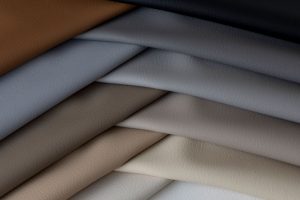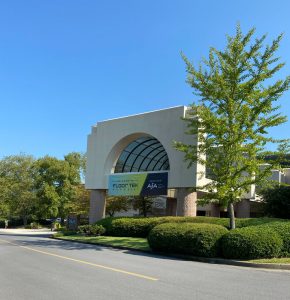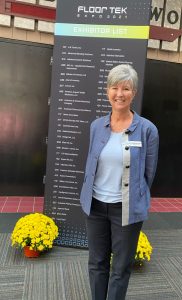CLITHEROE, England — September 14, 2021 — With a commitment to minimize its environmental impact through responsible product and business practice whilst pushing the boundaries of performance fabrics and innovation, Pertex® is pleased to announce the introduction its latest development — Pertex® Shield Revolve™, a more sustainable and technical waterproof/breathable material.
Pertex Shield Revolve fabrics are mono-material laminates where each layer of the fabric is made from a single polymer, in this case, 100-percent recycled polyester. The mono-material composition makes Pertex Shield Revolve fabrics much easier to be recycled at the end of a garment’s life, thereby minimizing the waste of resources and reducing the overall environmental impact of the fabric.
“Conventional waterproof breathable fabrics are constructed from multiple different polymer layers, such as nylon, polyurethane, polyester, and fluoropolymers, which are laminated into a multi-material fabric,” said Steve Laycock, Pertex Brand director. “These fabrics are very difficult to recycle at the end of the product’s life due to the major challenges of separating out the different polymers into their relevant waste streams.”
Pertex Shield Revolve fabrics are also completely free from per- and polyfluoroalkyl substances (PFAS), including the DWR and the membrane.
Rab introduced Pertex Shield Revolve in their Downpour Eco Jacket for SS21 and for AW21 they have adopted a new 3-layer version for the Rab Arc Eco Jacket.
“At Rab, we are proud to have worked with Pertex since our early days,” said Jim Evans, marketing director, Rab. “Together, we’ve pioneered high-performance outdoor clothing and equipment that delivers ultimate protection. Now as we are a certified Climate Neutral Company, aiming to be carbon Net Zero by 2030, everything in our design process considers our impact on the planet, without sacrificing on product performance. It’s great that Pertex shares that vision. Together we have succeeded in designing the Downpour Eco Jacket and the Arc Eco Jacket, using 100-percent recycled Pertex Shield Revolve fabric and thus reducing our impact while maintaining the performance you expect.”
Klättermusen will use a 2.5-layer Pertex Shield Revolve fabric in their new Brede 2.0 Jacket and Brage 2.0 Salopettes.
“We always strive to find developments and solutions that evolve us beyond tomorrow,” said Ida Holemen, global head of marketing, Klättermusen. “Circular thinking is crucial to this. Pertex Revolve series is using postconsumer recycled fibers from the face fabric to the membrane, and the protective backing to create this durable 3-layer material. So, not only recycled but also totally recyclable again. Circularity.”
For AW21, Martini Sportswear have adopted Shield Revolve in four new styles, including the Turbulence Jacket and Changeover Jacket.
“Every single one of our products enables athletes to achieve personal best performances,” said Ludwig Moz, marketing/PR, Martini Sportswear. “To ensure this, highly functional and reliable materials play a crucial role. When choosing them, in addition to functionality and longevity, the impact on the environment is also of great importance to us. Thanks to the careful use of resources during the production process, the high proportion of recyclable content and the associated low disposal costs, Pertex Shield Revolve is the right material to equip our customers with our products for their sport in the fresh air with a good conscience.”
Posted September 14, 2021
Source: Pertex®








